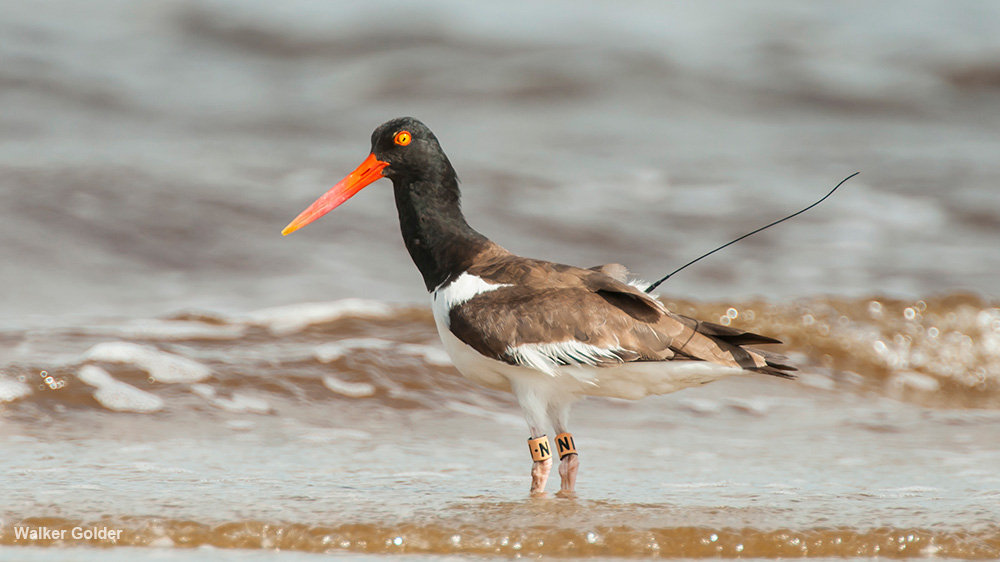
American Oystercatcher Research and Monitoring
American Oystercatchers (Haematopus palliatus) are striking black and white shorebirds with large reddish-orange bills. Oystercatchers breed on coastal beaches from Baja California to Nova Scotia (Nol and Humphrey 1994). Recent evidence of population declines, particularly in the Southeastern U.S. (Davis et al 2001), has prompted research aimed at understanding the bird’s biology and conservation needs.
American Oystercatchers are listed as threatened in Georgia and Florida, and proposed as a “species of special concern” in North Carolina. In 2002 and 2003 an aerial survey of the species’ winter range (Atlantic and Gulf coasts from New Jersey to Texas) resulted in a population estimate of 10971 individuals (+/-298), with 7500-8000 wintering on the Atlantic Coast (Brown et al. 2005).
In recent years, the Working Group has lead an effort to develop a protocol for surveying breeding across the species’ range from Maine to Mexico. Pilot surveys were conducted in 2013, 2015, and 2016. Developing a standard survey protocol will allow the American Oystercatcher Working Group and its collaborators to better track trends in the American Oystercatcher’s breeding population. The most recent protocol used in 2016 is available here.
Coordinated, widespread banding and re-sighting efforts have revealed a connection between breeding and wintering sites and a tantalizing glimpse into the complexity of patterns of movement and dispersal. There are currently color-banding projects in Massachusetts, New York, New Jersey, Virginia, North Carolina, South Carolina, Georgia, Florida, Texas, and Mexico. All researchers working with American Oystercatchers have agreed on a uniform banding and reporting scheme. In 2004 a large scale coordinated resighting effort was initiated to expand and standardize the largely ad hoc and opportunistic efforts to date. A central database of all banded oystercatchers and resightings is now maintained at Audubon North Carolina. We are currently using data from this coordinated resighting effort to estimate key demographic parameters, including survival and transition rates for each age class. Using these estimates we hope to generate much more accurate population models than are currently available. Better population models are important for assessing the effects of management actions and projecting future population trends.
